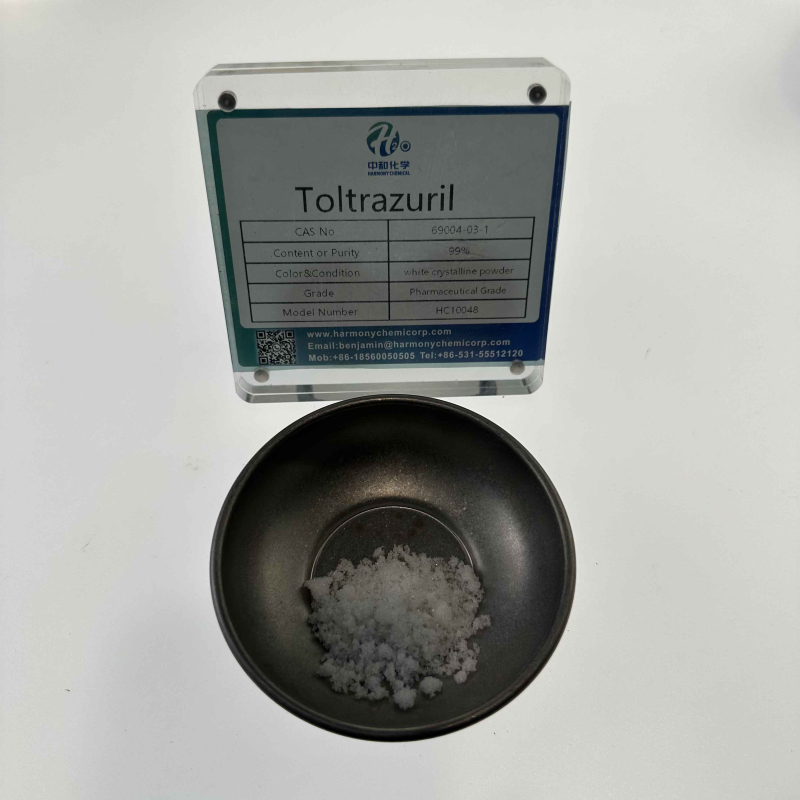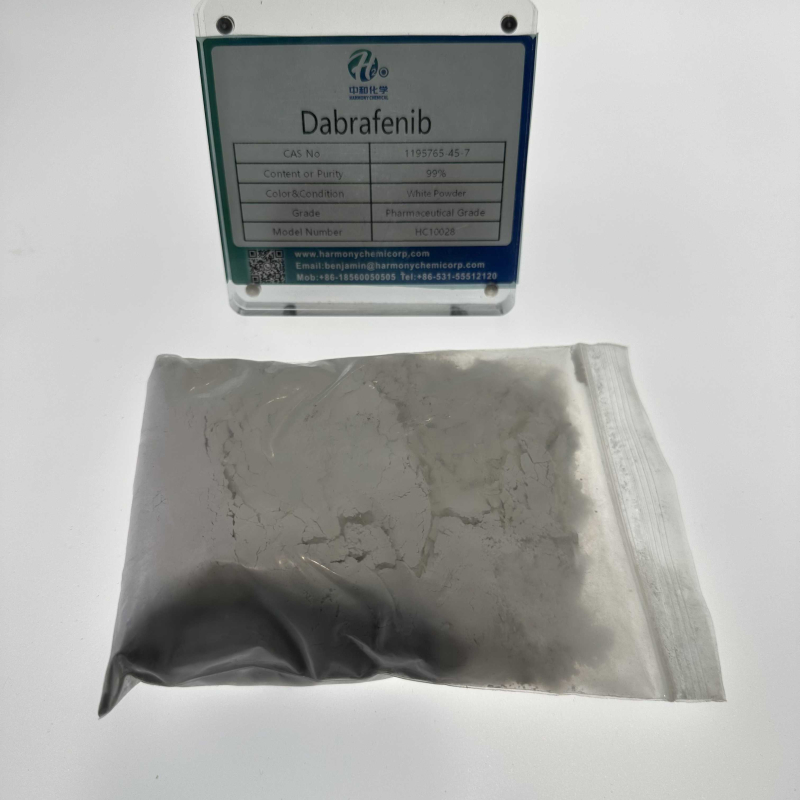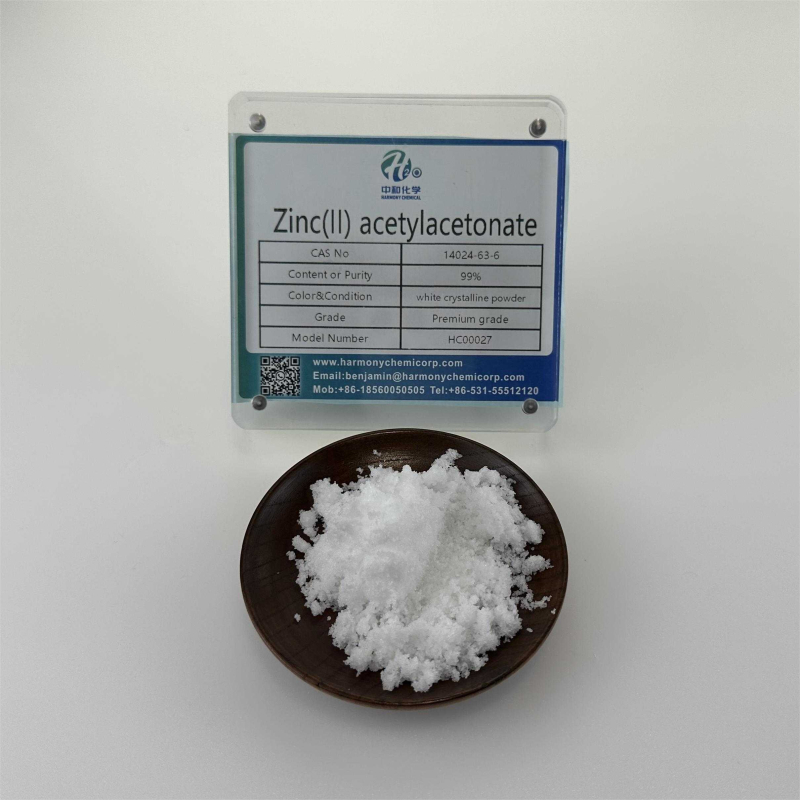name5-FluorouracilCAS NO51-21-8Molecular formulaC4H3FN2O2molecular weight130.08boiling point190-200°C/0.1mmHgdensity1.4593 (estimate)Storage conditions2-8°CsolubilityH2O: 10 mg/mL, clearformpowdercolourwhite
Contact Now
nameTopiroxostatCAS NO577778-58-6Molecular formulaC13H8N6molecular weight248.24boiling point594.7±60.0 °C(Predicted)density1.45±0.1 g/cm3(Predicted)Storage conditionsStore at -20°CsolubilityDMSO : 23.5 mg/mL (94.67 mM; Need ultrasonic and warming)Acidity coefficient (pKa)7.47±0.10(Predicted)formPowder
Contact Now
Main purposeEthylene glycol dimethyl acrylate is frequently used in the plastic and rubber industries as a crosslinking agent for ethylene acrylic copolymers, ABS, acrylic sheets, pipes, glass fiber bolstered polyester, PVC, ion trade resins, smokeless powder encapsulation polymerization, glazing, etc. is additionally used as a polymer in copolymerization, which will increase hardness, warmness resistance, climate resistance, solvent resistance, and friction resistance.
Contact Now
nameNitazoxanideCAS NO55981-09-4Molecular formulaC12H9N3O5Smolecular weight307.28melting point202°Cdensity1.629 g/cm3Storage conditions2-8°CsolubilitySoluble in DMSO (>50 mg/ml)formsolidcolourOff-white
Contact Now
nameTulathromycin ACAS NO217500-96-4Molecular formulaC41H79N3O12molecular weight806.09melting point186-188℃boiling point853.8±65.0 °C(Predicted)Storage conditionsKeep in dark place,Inert atmosphere,Store in freezer, under -20°CsolubilityDMSO (Slightly), Methanol (Slightly)formSolidcolourWhite to Off-White
Contact Now
Polyvinylpyrrolidone, additionally acknowledged as PVP, is a polymer of ethylene pyrrolidone. Due to its unique ranges of polymerization, it can be divided into soluble PVP and insoluble PVPP (polyvinylpyrrolidone). The relative molecular weight of soluble PVP is 8000~10000, which can be used as a precipitant to precipitate by way of reacting with polyphenols. By the usage of this method, there are effortlessly residual PVP in the wine.
Contact Now
nameLinezolidCAS NO165800-03-3Molecular formulaC16H20FN3O4molecular weight337.35melting point176-1780CSpecific RotationD20 -9° (c = 0.919 in chloroform)boiling point585.5±50.0 °C(Predicted)Storage conditionsroom tempformpowdercolourwhite to off-white
Contact Now
The conductivity of carbon black is carefully associated to its shape (especially graphite microcrystalline structure), floor properties, and particle size. The conductive mechanism of carbon black in rubber often consists of conductive channel and Field electron emission mechanism. The conductive channel mechanism is that carbon black aggregates come into contact with every different in the adhesive to structure a community like channel and behavior electricity.
Contact Now
nameTofacitinibCAS NO477600-75-2Molecular formulaC16H20N6Omolecular weight312.38density1.3Storage conditions-20°CsolubilitySoluble in DMSO (up to 100 mg/ml) or in Ethanol (up to 100 mg/ml).formPale powder.Acidity coefficient (pKa)6.04±0.60(Predicted)colourOff-white
Contact Now
ProjectIndicatorsAppearanceLight yellow transparent liquidActive substance content,%70 ± 2Free amine content,%≤ 2.0PH value (10% aqueous solution)4~7Filling, dipping or spray can be used as mothproof for wool fabrics; When used as a fungicide to deal with tough surfaces, it can be blended with chlorine dioxide for use
Contact Now
nameToltrazurilCAS NO69004-03-1Molecular formulaC18H14F3N3O4Smolecular weight425.38melting point194-196°Cdensity1.54±0.1 g/cm3(Predicted)Storage conditionsSealed in dry,Room TemperatureAcidity coefficient (pKa)Sealed in dry,Room Temperatureformneat
Contact Now
nameAdemetionine disulfate tosylateCAS NO97540-22-2Molecular formulaC22H34N6O16S4molecular weight766.78melting point>122°C (dec.)Storage conditionsInert atmosphere,Store in freezer, under -20°CsolubilityDMSO (Slightly, Heated), Water (Sparingly)formSolidcolourWhite to Pale Yellow
Contact Now
CAS NO104-47-2Molecular formulaC9H9NOmolecular weight147.17melting point8 °Cboiling point286-287 °Cdensity1.085 g/mL at 25 °CStorage conditionsSealed in dry,Room TemperatureformLiquidcolourClear colorless to slightly yellowpH value4.5 (100g/l, H2O, 20℃)suspension
Contact Now
Prilocaine is an amide type close by anesthetic. Its anesthetic depth and pace are similar to Lidocaine, alternatively its size is prolonged and its vasodilation have an impact on is weak. The toxicity is limit than lidocaine. Clinically used for close by anesthesia, specially fantastic for victims who hold away from the utilization of adrenaline.namePrilocaineCAS NO721-50-6Molecular formulaC13H20N2Omelting point37-38°boiling pointbp0.1 159-162°density1.0117 (rough estimate)refractivitynD20 1.5298Storage conditions2-8°CformCrystalline powderSOLUBLE6.169g/L(25 ºC)
Contact Now
nameDabrafenibCAS NO1195765-45-7Molecular formulaC23H20F3N5O2S2molecular weight519.56melting point214-216oCboiling point653.7±65.0 °C(Predicted)density1.443Storage conditions-20°CformWhite solid.colourOff-white
Contact Now
AKD wax: Currently, the manufacturing of AKD wax can be non-toxic, wastewater free, odorless, and pollution-free. Obtained country wide patents for manufacturing the usage of solvent free method. Liquid AKD wax can additionally resolve the hassle of paper slipping.
Contact Now
NameAluminum tripolyphosphateMain ingredientsaluminum tripolyphosphate and its modified substances.Anti rust geneP3O105-Aluminum tripolyphosphate is a new era of pollution-free white rust resistant pigment and an best substitute product for lead and chromium primarily based poisonous rust resistant materials. Since its launch in 1993, this product has been utilized and examined via over a hundred influential paint factories (institutes) in China.
Contact Now
nameMETHOPRENECAS NO40596-69-8Molecular formulaC19H34O3molecular weight310.47melting point<25℃boiling pointbp0.06 135-136°density0.9261 g/cm3 (20℃)Storage conditions0-6°CsolubilityChloroform (Slightly), Methanol (Sparingly)formneat
Contact Now
Melting point: 165-185 ℃Density: 1.08g/cm3Refractive index: 1.488 (20 ℃)Water absorption rate: no longer extra than 0.4%Softening temperature: 60-65 ℃Glass transition temperature: 66-84 ℃ (varies relying on diploma of polymerization)Solubility: Soluble in most natural solvents such as alcohols/ketones/ethers/esters, insoluble in carbon hydrocarbon solvents [2]Application Editing1.
Contact Now
This product is an amide Local anesthetic. Widely used in surface anesthesia, infiltration anesthesia, conduction anesthesia, and epidural anesthesia.nameLidocaineCAS NO137-58-6Molecular formulaC14H22N2Omolecular weight234.34melting point66-69°Cflash point9℃solubilityethanol: 4 mg/mLformpowdercolourWhite to slightly yellowSOLUBLEpractically insoluble
Contact Now
Physicochemical properties: Acetylacetone zinc is a white powder with a attribute odor, secure properties, and convenient to react with oxidants. Melting factor 129-133 ℃. Easily soluble in methanol.Acetylacetone zinc can be used as an additive, inclusive of halogenated polymers, mainly polyvinyl chloride. It is the most usually used warmness stabilizer in the method of agents, and is additionally used as a catalyst.
Contact Now
nameL-ProlinamideCAS NO7531-52-4Molecular formulaC5H10N2Omelting point95-97 °Cboiling point213.66°C (rough estimate)refractivity1.4720 (estimate)Storage conditionsKeep in dark place,Inert atmosphere,Room temperaturesolubilityChloroform (Slightly), Methanol (Slightly)formPowder or GranulescolourWhite
Contact Now
nameAdmireCAS NO105827-78-9Molecular formulaC9H10ClN5O2molecular weight255.66melting point136-144°Cdensity1.542formWhite crystallineVapor pressure2×10-7Pa (20℃)
Contact Now
Due to the shortcomings of urea formaldehyde resin such as terrible preliminary viscosity, massive shrinkage, excessive brittleness, water resistance, handy aging, launch of formaldehyde, and air pollution of the surroundings and injury to fitness in the course of curing, it is integral to regulate it to enhance its overall performance and increase its application.
Contact Now





























